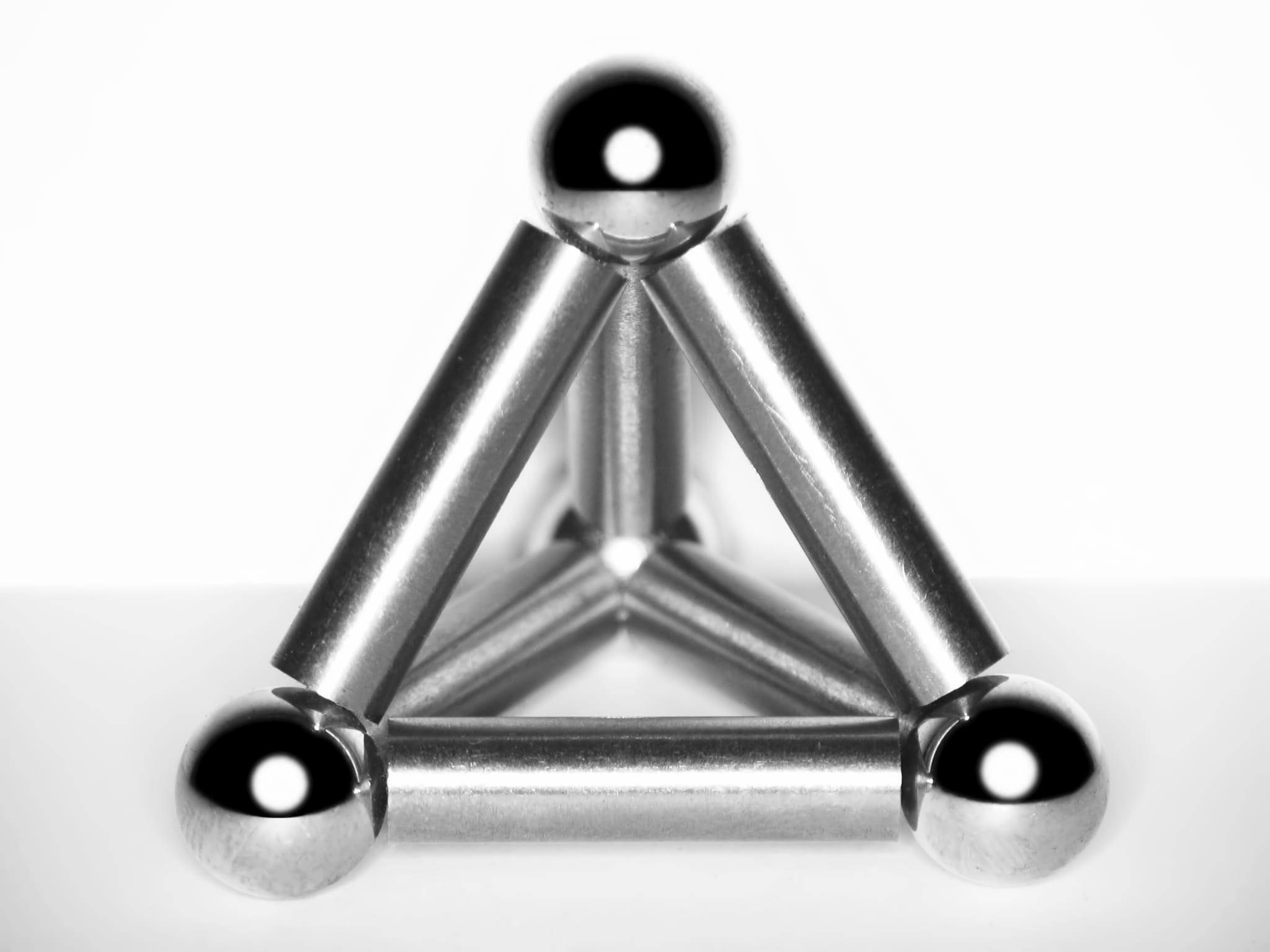"Toy" Magnets Are Dangerous for Children Important Tips for Prevention and Treatment

The Bottom Line
Sets of tiny, strong magnets were sold as adult toys but often were swallowed by children, resulting in serious injury and even death. The magnets, or a magnet and another metal object, stuck to each other, even through folds of intestine or tissue. This pinched off blood supply to the area, causing tissue death, bleeding, and infection.

The Full Story
January 2020 Update:
In November of 2016, the ban on powerful rare-earth magnets was lifted, making these dangerous magnets available in stores again. This has led to six times more magnet ingestions in 2019 – nearly 1,600 cases reported to U.S. Poison Control Centers – than in 2016.
Small children find these magnets interesting and can readily swallow them. Rather than banning these powerful magnets, which can cause serious harm when swallowed, the court allowed manufacturers to place their own voluntary safety standards. This has amounted to warnings and packaging changes in some cases. These measures are inadequate because the magnets can be swallowed by children and are 10 times stronger than common household refrigerator magnets.
Their strength and size make them dangerous. If more than one is ingested, they can trap digestive tissue, preventing blood supply to that area, which can be life-threatening. Surgery is often needed to remove the magnets and fix the damaged tissue.
The safety measures voluntarily implemented by the manufacturers are not enough to prevent children, or anyone, from swallowing them. Because it's voluntary, some manufacturers do not even have warnings. The burden of prevention falls solely on parents and caregivers. Be aware of the dangers and be sure children do not have access to these powerful rare-earth magnets.
Were you fascinated by magnets as a child? The invisible, magical force between them that either slapped them together or never let them meet, no matter how hard you tried? You could play with them for hours, twirling them in your hands, taking them apart and putting them together again, letting them slide across the floor or table towards one another. Like many children, you probably didn't know that swallowing magnets could hurt you. But back then, most magnets were too big to swallow anyway.
Today, magnets are very common, much more powerful, and even more appealing to children than they used to be. They are shiny, smooth, round, small and colorful. Often sold in packs of many tiny magnetic beads, they were marketed as fun toys for older children, teenagers and even adults. These small, powerful magnet sets are extremely attractive to children. And, they are extremely dangerous to swallow.
For children, magnets also may be available as toy building sets where the magnet pieces are covered by plastic in various shapes. Magnets were commonly marketed for teenagers and young adults as fake jewelry and piercings. Poison Control receives a lot of calls after people swallow these fake, magnetic tongue piercings; the magnets were slippery when covered with saliva!
The most common magnets for children to swallow are those marketed for adults. These small, high-powered magnet sets are sold as sculptures, stress relievers and as desk toys to help with office boredom. Sets of more than 200 tiny magnetic balls can be molded into many different shapes. Until recently, they were widely available for purchase in a variety of stores and over the Internet. Videos displaying different ways to play with them are widespread on websites like YouTube
More and more children have been swallowing the tiny "adult toy" magnets, leading to severe injury and even death. When a child swallows two or more magnets, the magnets can attract and meet each other within the child's body, causing digestive tissue to be trapped between them. This cuts off blood supply to the stomach or intestines. These internal injuries can be life-threatening. The same thing can happen when a child swallows even one magnet and an object that can be attracted to it, like a coin or button cell battery.
The United States Consumer Product Safety Commission (CPSC) reports that ingestion of magnets from magnet sets led to 1,700 visits to the hospital from 2009-2011. The majority of the patients were children. Some required surgery to remove the magnets. A few had permanent damage to the digestive tract. To date, one child has died.
Even though adult magnet sets carry warning labels, a growing number of children are being severely injured after swallowing these magnets. For this reason, magnet sets have been pulled from the market.
Swallowing magnets is a serious, life-threatening matter. Prevention is key. Children often do not report what they did. Signs and symptoms of swallowing magnets can often be mistaken for a viral illness. They may include nausea, vomiting, abdominal pain and fever.
Here are some important tips to avoid poisoning:
- If magnet sets are used in the home, store them in a locked cabinet or box out of reach of children and pets. Be sure to discard them safely, too.
- Magnet sets should also be kept away from older children and individuals with developmental delay or the elderly with memory impairment.
- Choose refrigerator magnets that are large enough they cannot be swallowed or pose a choking hazard to children.
- Avoid the use of magnetic beads as fake body piercings.
- After use of magnets, count each piece to make sure none are missing.
If anyone swallows a magnet, here's what you should do:
- Do not try to make the person throw up.
- Do not give anything to drink or eat.
- Call Poison Control right away at 1-800-222-1222. The experts will tell you what to do.
Serkalem Mekonnen, RN, BSN, MPH
Certified Specialist in Poison Information
Poisoned?
CALL 1-800-222-1222
Prevention Tips
Here are some important tips to avoid injuries from tiny magnets.
- If magnet sets are used in the home, store them in a locked cabinet or box out of reach of children and pets. Be sure to discard them safely, too.
- Magnet sets should also be kept away from older children and individuals with developmental delay or the elderly with memory impairment.
- Choose refrigerator magnets that are large enough they cannot be swallowed or pose a choking hazard to children.
- Avoid the use of magnetic beads as fake body piercings.
- After use of magnets, count each piece to make sure none are missing.
This Really Happened
Case 1: A 9-year-old child with a habit of putting things in her mouth swallowed a button battery and a magnet. The child was brought to the hospital. An x-ray showed the battery and the magnet stuck together in the bowel. Surgery was performed to remove the battery and the magnet. The child had developed an area of dead tissue in the bowel where the tissue was caught between the objects and blood flow had been interrupted. The child was admitted to the hospital for tube feedings and intravenous fluids.
Case 2: A 2-year-old child had swallowed 6 disc batteries and a magnet; no one had seen it happen. The child was brought to the emergency room because of abdominal pain and vomiting. An x-ray showed that the objects were scattered throughout the gastrointestinal tract.
A tube was passed into the child's stomach and two batteries were removed. The child was admitted to the hospital. Several hours later, his pain got worse and his stomach distended.
He was taken to surgery where the four remaining batteries and the magnet were removed. There were 2 areas of bowel perforation. The child had to undergo bowel repair surgery. He needed a breathing tube during surgery. After surgery, he needed strong narcotics for pain; he was fed by IV.
A few days later, he developed a fever and an infection was diagnosed. He was started on intravenous antibiotics. The following day, the child was taken back into surgery for worsening symptoms. Part of his bowel had to be removed and he was given a colostomy.
The child remained in the hospital for 2 more months. After discharge, he went through several more procedures to reverse the colostomy. Recovery was complete after 6 months.
For More Information
U.S Consumer Product Safety Commission. CPSC Starts Rulemaking to Develop New Federal Standard for Hazardous, High-Powered Magnet Sets [Internet]. Washington, D.C.; 2012 Aug 27 [cited 2012 Sep 23].References
Silverman JA, Brown JC, Willis MM, Ebel BE. Increase in pediatric magnet-related foreign bodies requiring emergency care. Ann Emerg Med. 3013:62:604-608.e1Poisoned?
CALL 1-800-222-1222
Prevention Tips
Here are some important tips to avoid injuries from tiny magnets.
- If magnet sets are used in the home, store them in a locked cabinet or box out of reach of children and pets. Be sure to discard them safely, too.
- Magnet sets should also be kept away from older children and individuals with developmental delay or the elderly with memory impairment.
- Choose refrigerator magnets that are large enough they cannot be swallowed or pose a choking hazard to children.
- Avoid the use of magnetic beads as fake body piercings.
- After use of magnets, count each piece to make sure none are missing.
This Really Happened
Case 1: A 9-year-old child with a habit of putting things in her mouth swallowed a button battery and a magnet. The child was brought to the hospital. An x-ray showed the battery and the magnet stuck together in the bowel. Surgery was performed to remove the battery and the magnet. The child had developed an area of dead tissue in the bowel where the tissue was caught between the objects and blood flow had been interrupted. The child was admitted to the hospital for tube feedings and intravenous fluids.
Case 2: A 2-year-old child had swallowed 6 disc batteries and a magnet; no one had seen it happen. The child was brought to the emergency room because of abdominal pain and vomiting. An x-ray showed that the objects were scattered throughout the gastrointestinal tract.
A tube was passed into the child's stomach and two batteries were removed. The child was admitted to the hospital. Several hours later, his pain got worse and his stomach distended.
He was taken to surgery where the four remaining batteries and the magnet were removed. There were 2 areas of bowel perforation. The child had to undergo bowel repair surgery. He needed a breathing tube during surgery. After surgery, he needed strong narcotics for pain; he was fed by IV.
A few days later, he developed a fever and an infection was diagnosed. He was started on intravenous antibiotics. The following day, the child was taken back into surgery for worsening symptoms. Part of his bowel had to be removed and he was given a colostomy.
The child remained in the hospital for 2 more months. After discharge, he went through several more procedures to reverse the colostomy. Recovery was complete after 6 months.
